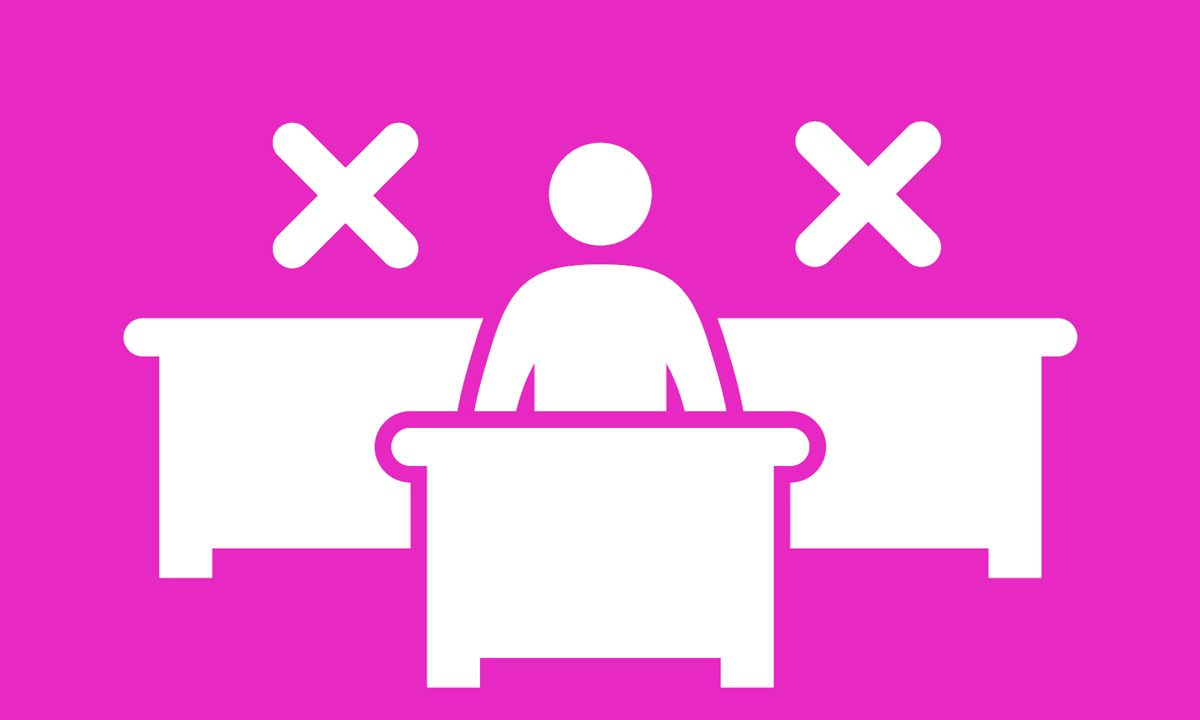As Nation Reels from Chronic Absenteeism, Indiana Confronts it in the Extreme
In Gary, Indiana, some 70% of students missed large chunks of school; in Muncie, it was 60%; in Indianapolis, nearly 40%. 30% is considered extreme.

Get stories like this delivered straight to your inbox. Sign up for The 74 Newsletter
More than a third of Indiana high school seniors and 1 in 5 K-12 students were chronically absent last year, according to data from the State Department of Education.
Half of students in 84 Indiana schools were chronically absent last year. Chronic absenteeism is defined as when students miss at least 10% of school days, or 18 days in a year. Indiana has its own higher goal for its students— 94% attendance — but 40% are missing that mark.
“Prior to Covid our learning incomes needed improvement,” Indiana Secretary of Education Katie Jenner told The 74. “But when you look at our chronic absenteeism data, we’re setting up for a situation that’s a vicious cycle.”
Students who struggle academically, Jenner said, are the most likely to be chronically absent.

“When they’re missing almost a month of school, or in some cases more than a month, it’s causing significant challenges for our educators to get them caught back up,” she said.
Indiana is far from alone in its struggle with student attendance. An analysis by Attendance Works and the Everyone Graduates Center at Johns Hopkins University shows that 2 out of 3 students in the U.S. were enrolled in schools with high or extreme rates of chronic absenteeism during the 2021-22 school year.
Indiana’s numbers are considered extreme. The state’s absenteeism data looks like an inverted bell curve. Children in grades K-2 are absent at higher rates than students in higher elementary grades and middle school. The absenteeism rates go up again in high school.
But attendance is a problem throughout the grades. Among the most concerning data for state officials are absenteeism rates for fourth graders. Thirty-five percent of fourth graders were chronically absent last year, according to federal data. Nearly 40% of Indiana’s fourth graders scored below basic on federal reading tests last year. Low academic performance is associated with chronic absenteeism, especially when students are absent five or more days during the month preceding the assessment.
Indiana fared better than some other states when it came to attendance last year. New Mexico reported a 40% absenteeism rate statewide and Nevada’s was at 36%. But a closer look at Indiana’s data is more troubling.
While nearly 40% of students in Indianapolis, the state’s biggest district, were chronically absent last year, in Gary, that number was more than 70% and in Muncie, more than 60% of students missed more than three weeks of school, according to the State Department of Education.
“It’s a crisis in our district at every grade level,” said Lee Ann Kwiatkowski, director of public education for Muncie Community Schools. Kwiatkowski said that during the pandemic, school officials encouraged families to keep children home if they were even slightly ill. Now, they’re trying to reverse that message. “We would say, ‘Come pick them up, they’re coughing.’ Now, we see that if a student says they have a headache, parents are letting them stay home,” she said. “We are working to change that narrative.”
The most vulnerable groups are the most likely to be chronically absent, state data shows. More than 30% of Black students missed more than three weeks of school last year. Over a quarter of students who qualify for free and reduced-price lunch were chronically absent, as were 1 in 5 English language learners.
Family poverty is one issue at the core of the problem, Jenner said. When asked why they are so frequently absent from school, high school students have said that they have to care for younger siblings while a parent works. Other students report that because they are not fluent in English, they don’t understand what their teachers are saying.
At one Gary, Indiana school in particular, poverty and chronic absenteeism have contributed to low academic achievement. More than 85% of students at Bailly Middle School — now called Bailly STEM Academy — qualify for free or reduced-price lunch. In 2022, just 1% of sixth graders at Bailly met growth targets on state math assessments. That year, 96% of students were chronically absent. Officials in Gary declined to comment.
With this level of chronic absenteeism, Attendance Works Executive Director Hedy Chang said, the school’s climate must be missing core elements that make kids feel safe and engaged. To get students to attend school regularly, administration will have to launch a school-wide effort to create a secure and welcoming environment.
“My first question would be, ‘Do I make sure that every kid has an adult on that campus they can talk to?’” Chang said. Physical and emotional safety and a feeling of belonging are among the core conditions necessary to engage students, she said. “You can send out communications saying, ‘we miss you,’ but if a student doesn’t feel like anybody at the school cares about them, some little note might not do a lot.”

High-poverty communities like the one served by Bailly were hit hardest by the pandemic, Chang added. Low-income families were most likely to include essential workers and to experience the loss of family members, jobs and access to health care. After enduring this kind of stress, families may be particularly cautious about sending children to school, Chang said.
“If you want to tell families that it’s safe for their children to come back to school, you have to make sure that it’s true,” she said. “When schools shut down, the trust between families and schools was eroded.”
Earlier this school year, Indiana state officials announced development of an early warning dashboard to make educators and parents aware of which students are in danger of not graduating. Attendance will be one of the indicators included in determining who is at risk. The state plans to pilot the dashboard in the next school year.
The dashboard reflects Indiana’s shifting view of absenteeism, Jenner, the state education secretary, said. Rather than looking at school-site data, the dashboard focuses on individual students. Learning outcomes and attendance data will be posted for each student, to help teachers and families keep track.
“That will be telling, for parents and families,” she said. “They can see early on if their child is chronically absent and what impact that is having.”
Get stories like these delivered straight to your inbox. Sign up for The 74 Newsletter

;)